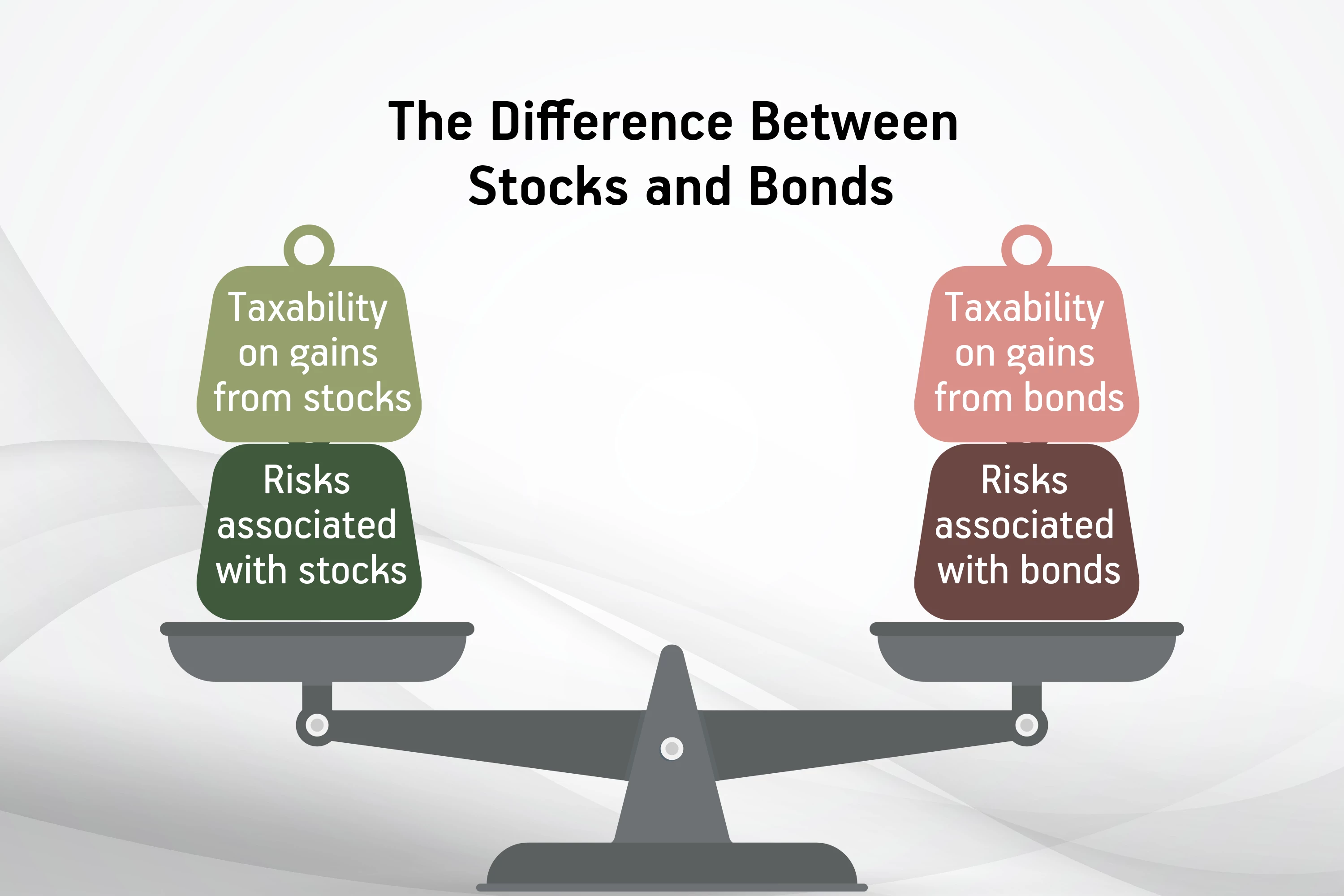-
Our Products
Our FundsFocus Funds
-
Self Care
Self-ServiceFind InformationWays To TransactPartner Solutions
-
Downloads
- Learnings
- About Us
-
More
-
Shareholders
-
Shareholders
-
Updates
-
-
SIP Calculators
- Back
-
Shareholders
The Difference Between Stocks and Bonds
Sep 12, 2022
3 min
4 Rating
Stocks and bonds are two important investment avenues, which can offer a diversification to the portfolio. Both these avenues are starkly different, and the risk profiles of these avenues are different. Here we chalk out the key difference between stocks and bonds.
What are stocks?
Stocks are equity shares which provide partial ownership in the company, they are listed on the bourses and traded. Depending on the demand and supply dynamics clubbed with investor perception, the prices of stocks remain volatile. The more ups and downs the stock price observes over the time horizon, the riskier the stock is.
Stocks can provide returns in two forms, a capital appreciation which arises when the stock price moves up from the level of purchase and a dividend which is paid out on an intermediate basis, typically, a dividend is paid annually and, on a half-yearly basis, coinciding with the announcement of mid-year and annual results of the company’s financials.
Although there are other types of stocks like preference stocks, stocks in general parlance refer to equity stocks which bear the high risk as they are the last ones to gain preference in the event of liquidation of the company.
Risks associated with stocks:
The most prominent risk in stocks is market risk, the volatility of the markets could potentially dictate the movement of the stocks and returns thereof. Liquidity risk is another risk which determines the ease with which you can convert the holding into cash. While most stocks have ample liquidity, there are a few which do not offer sufficient liquidity, which may make it tough to offload your holding. There are other risks which may be specific to stocks such as foreign exchange risk, which could potentially impact the revenue of the stocks if the company is exposed to foreign accounts for revenue generation. Interest rate risk is also applicable if the company has high debt on its books.

Taxability on gains from stocks:
The holding period of equity stocks determines if the gains are subject to long-term capital gains or short-term capital gains. Long-term capital gains are applicable if the holding period is greater than 12 months, if the gain is over Rs. 1 lakh from equity-oriented instruments is taxed at 10%. The short-term capital gains are applicable for a holding period lower than 12 months, the tax rate is at 15% on the total gains.
What are bonds?
A bond is a fixed income instrument, it represents the borrowings by the company or entity issuing the bond. The bonds can be issued by Government or Corporate. The bond is a sort of I.O.U between the borrower and lender. Many entities including companies, State and Central governments, municipalities etc., use debt to finance their projects and operations. A bond owner is a debtholder or creditor of the issuer. Bonds are of relatively lower risk than that equities, however, within the various categories of bonds, the credit risk of bonds issued by the Government is lower as compared to others. The bonds are traded in the bond market and are subject to volatility based on credit quality. The G-sec, Gilt bonds, and treasury bonds are backed by the Government and hence, carry lower credit risk. The returns generated from these bonds are in the form of interest rates, the interest can be either fixed or floating rate depending on the type of debt instrument.
Risks associated with bonds
The most prominent risk that is associated with bonds is interest rate risk, the bonds offer returns in the form of interest rates, and the fluctuations in the interest rates would impact the interest offerings or the bond prices depending on whether the interest rates are floating or fixed respectively. In the case of fixed interest rates, a rise in interest rates would translate to a fall in bond prices. A rise in the interest rate would benefit instruments with floating interest rates.
The other most prominent risk is credit risk, the quality of the bond would determine the credit risk. This is also called default risk, the credit risk of the debt instruments is ranked as AAA, AA+ etc., These two categories are top-quality bonds, the bonds issued by Government are of high credit quality and hence, the default risk or credit risk is lower in these types of instruments.
Taxability on gains from bonds:
The holding period for listed bonds is 12 months, if held for a period greater than 12 months, it is taxed as long-term capital gains which are 10% without indexation, while short-term capital gains (holding period less than 12 months) are subject to normal tax rates which could be 30% if you fall within the highest tax slab.
In a nutshell:
Having understood the nuances of stocks and bonds, it is now apparent that both these instruments have their own merits and can be an addition to your portfolio in the appropriate proportion suited for your risk appetite.
Also read : What is Equity Fund?
Mutual Fund investments are subject to market risks, read all scheme related documents carefully.





 1800-270-7000
1800-270-7000



